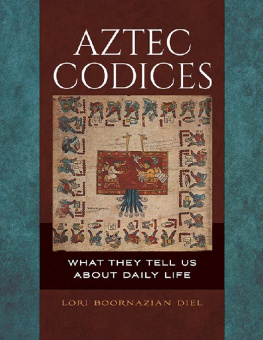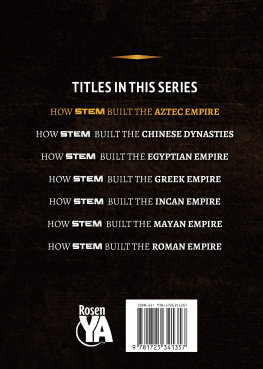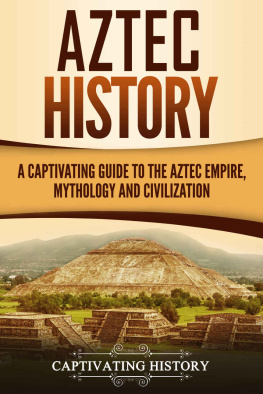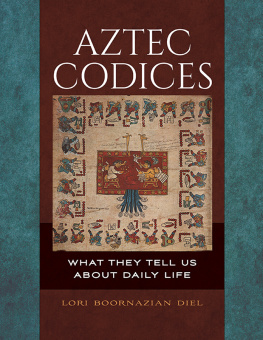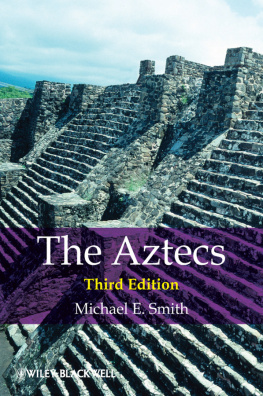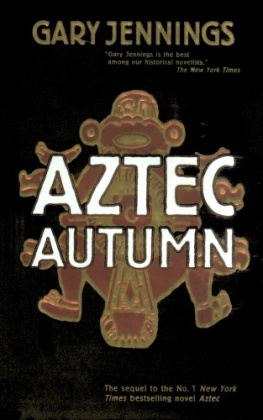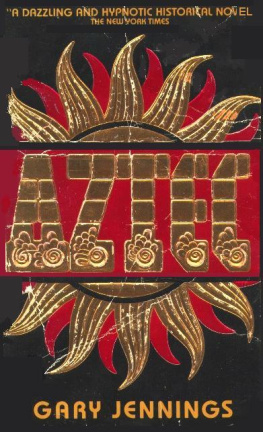Aztec Codices
Aztec Codices
What They Tell Us about Daily Life
Lori Boornazian Diel

Copyright 2020 by ABC-CLIO, LLC
All rights reserved. No part of this publication may be reproduced, stored in a retrieval system, or transmitted, in any form or by any means, electronic, mechanical, photocopying, recording, or otherwise, except for the inclusion of brief quotations in a review, without prior permission in writing from the publisher.
Library of Congress Cataloging-in-Publication Data
Names: Diel, Lori Boornazian, 1970 author.
Title: Aztec codices : what they tell us about daily life / Lori Boornazian Diel.
Description: Santa, Barbara, California : ABC-CLIO, [2020] | Includes bibliographical references and index.
Identifiers: LCCN 2019051115 (print) | LCCN 2019051116 (ebook) | ISBN 9781440851803 (hardcover) | ISBN 9781440851810 (ebook)
Subjects: LCSH: AztecsHistory. | Manuscripts, Nahuatl. | AztecsSocial life and customs.
Classification: LCC F1219.73 .D555 2020 (print) | LCC F1219.73 (ebook) | DDC 972dc23
LC record available at https://lccn.loc.gov/2019051115
LC ebook record available at https://lccn.loc.gov/2019051116
ISBN: 978-1-4408-5180-3 (print)
978-1-4408-5181-0 (ebook)
242322212012345
This book is also available as an eBook.
ABC-CLIO
An Imprint of ABC-CLIO, LLC
ABC-CLIO, LLC
147 Castilian Drive
Santa Barbara, California 93117
www.abc-clio.com
This book is printed on acid-free paper 
Manufactured in the United States of America
Contents
This book explores Aztec culture and history through a focus on Aztec codices. The Aztec empire was one of the most powerful empires to emerge in ancient Mesoamerica, but it was short-lived. Located in modern-day Mexico, the Aztec empire was born in 1428 and ended in 1521, when it was conquered by Spaniards in alliance with other Native groups. In this short time, the Aztecs grew their capital, called Tenochtitlan, into a monumental city that was home to up to 250,000 people and their empire into a massive territory with up to five million subjects. The Aztecs administered their empire and recorded their history, religion, and customs in pictorial books, or codices. The vast majority of Aztec books were destroyed during the Spanish invasion and conquest, but after the conquest, many Aztec peoples returned to their pictorial system of writing and compiled new books. These records provide valuable insight into Aztec history and culture, especially because they were written by the Aztec peoples themselves.
The major foundation and strength of this book is its inclusion of over forty images taken from Aztec codices. Each image is explained in detail, allowing readers to understand how the pictorial writing system of the Aztecs worked and how these pictorial records were interpreted. The larger significance of the images and what they reveal about life in the Aztec world are then explained in more detail. Suggestions for further readings are also provided, as are over a dozen sidebars that provide additional information on the lives and history of the Aztec peoples.
There are two main focuses of the book: Aztec history and Aztec culture. The first two chapters deal with Aztec history. The first provides a visual record of the story of the Aztec migration and search for their destined homeland of Tenochtitlan. The next chapter explores the buildup of the Aztec empire. The following five chapters then explain life in the Aztec world, focusing on Aztec conceptions of time and religion, the Aztec economy, the life cycle, and daily life. The book ends with an account of the fall of the empire, as illustrated by Aztec artists. With sections concerning a wide variety of mattersfrom the Aztec pantheon to war, agriculture, childhood, marriage, diet, justice, the arts, and sports, among many othersreaders will gain an expansive understanding of life in the Aztec world.
One of the most significant features of this book is that the majority of its contents come from primary sources. Each of the images included in this book was painted by a Native artist and therefore preserves the voice of the Aztec peoples. Moreover, many Spaniards were eyewitnesses to life in the Aztec world and wrote their accounts in letters and chronicles. These sources are also frequently referenced. Largely recorded in the sixteenth century and in pictorial and alphabetic script, these sources are explained in a clear manner that students will find easy to understand and to engage with. Moreover, each section ends with suggestions for further readings. Thus, this book will be a key reference for students wishing to learn more about the history of the Aztec empire and the lives of Aztec peoples and will provide guidance to students wishing to dig deeper into a variety of topics.
The Aztec empire was one of the most powerful empires to emerge in ancient Mesoamerica. The empire was led by a group of people who called themselves Mexica. Their capital was a city called Tenochtitlan, or Place of the Prickly Pear Cactus, which was a city built on an island in Lake Texcoco. Modern-day Mexico City is built directly on top of the ruins of Tenochtitlan. The Mexica were latecomers to the Valley of Mexico, having traveled from a place in the north that they called Aztlan. When they arrived in the Valley in the fourteenth century, most of the prime lands were already taken by other groups, so the Mexica were forced to settle on a miserable, unoccupied island. As poor immigrants, the early Mexica settlers had to become subjects of other, more powerful cities. However, they slowly amassed power, allies, and military strength. A major victory in 1428, or 1 Flint in the Aztec calendar, transformed the Mexica into imperial leaders. Over the next decades, they conquered more and more territories, making their empire the most extensive in ancient Mesoamerican history. By the time the Spaniards arrived, less than a hundred years later, Tenochtitlans population was as high as 250,000 people, and the Aztec empire had up to five million subjects. These subjects were united through shared political, economic, and religious systems, and most spoke the same language, called Nahuatl.
Though scholars often use the word Aztec to refer to the larger empire and its cultural traditions, it is a problematic term. The Mexica, leaders of the empire, never called themselves Aztecs, nor did the subjects of the empire see themselves as a unified group called Aztecs. In fact, the term seems to have come into use after the conquest to refer to the Mexica as the People from Aztlan, which is how one would translate the word Azteca. The word is obviously well known today, and most scholars still use the term to refer generally to the larger Aztec empire, its subject peoples, and its cultural traditions, as is done throughout this book. However, scholars also use ethnic qualifiers to refer to specific groups and polities within the empire. Accordingly, Mexica refers to the leaders of the empire and inhabitants of Tenochtitlan, while residents of the city of Texcoco, which was Tenochtitlans main ally and the second-most powerful city within the empire, called themselves Acolhua. The residents of another important city in the history of the Aztec empire, Azcapotzalco, called themselves the Tepaneca. Moreover, the Aztec empire did not encompass all of central Mexico. For example, there was a confederation of four city-states whose territory was called Tlaxcala and their people were called the Tlaxcalteca. The Mexica were never able to conquer this territory, so Tlaxcala remained independent, and one would not use the term Aztec to refer to the polity. The more general term Nahua is useful in this regard, as it refers to all the Nahuatl speakers in central Mexico and therefore encompasses both the members of the Aztec empire and independent groups like the Tlaxcalteca. Generally, whether or not they were members of the Aztec empire, all of these groups shared similar cultural traditions and belief systems.

